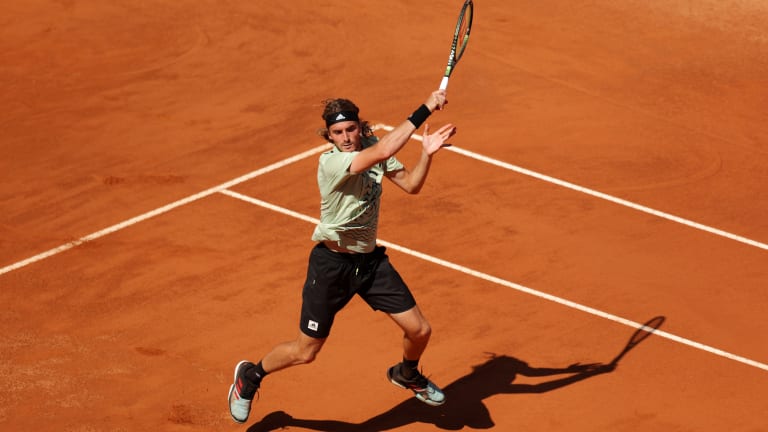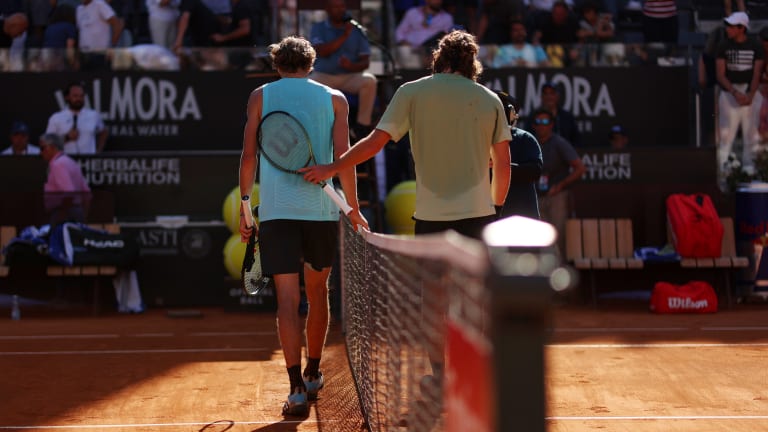Rome, Italy
Stefanos Tsitsipas fights past Alexander Zverev to reach Rome final for the first time
By May 14, 2022Rome, Italy
Carlos Alcaraz didn't call Jannik Sinner during Italian's ban, won't tire of praising "amazing" colleague
By May 19, 2025Rome, Italy
Carlos Alcaraz beat Jannik Sinner in a chess-like two sets to win Rome, then offered him a very public welcome back
By May 18, 2025Rome, Italy
Carlos Alcaraz snaps Jannik Sinner's 26-match winning streak, wins Rome title
By May 18, 2025Rome, Italy
Italian tennis and padel president want to make Rome a fifth Grand Slam
By May 18, 2025Rome, Italy
Jannik Sinner vs. Carlos Alcaraz: Where to watch their Rome final, preview and pick
By May 17, 2025Rome, Italy
Jannik Sinner took “a straight punch to my face” from Tommy Paul, then punched his ticket to the Rome final
By May 16, 2025Rome, Italy
Coco Gauff vs. Jasmine Paolini: Where to watch their Rome final, preview and pick
By May 16, 2025Rome, Italy
Carlos Alcaraz advances to first Rome final, bids for seventh Masters 1000 title
By May 16, 2025Rome, Italy
Jannik Sinner vs. Tommy Paul: Where to watch their Rome semifinal, preview and pick
By May 16, 2025Stefanos Tsitsipas fights past Alexander Zverev to reach Rome final for the first time
Ever hear the notion that metabolism is destiny? For a case study, check out the Greek’s win over Zverev in the semifinals of the Internazionali BNL d’Italia.
Published May 14, 2022
Advertising
Advertising

Tsitsipas earned a tour-leading 31st match victory and advanced to the finals in Rome for the first time in five appearances.
© Getty Images
Advertising

The win boosted Tsitsipas’ record versus Zverev (left) to 8-4, including 2-1 on clay this year.
© Getty Images